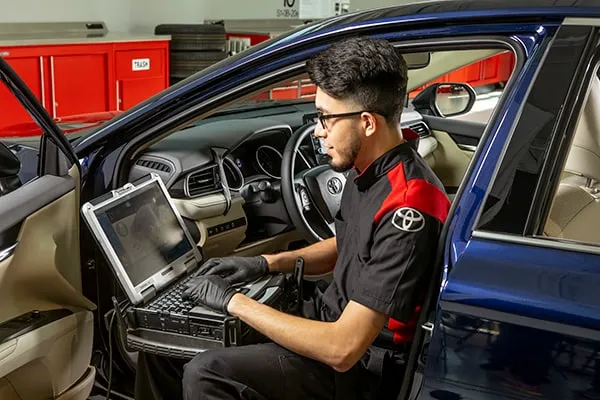For many drivers, a car is more than just a mode of transport—it’s an investment. Whether you own a brand-new model or a trusted used vehicle, regular maintenance is the key to ensuring reliability, safety, and longevity. Neglecting simple checks can lead to costly repairs, while proactive care can add years to your car’s lifespan. Below, we’ll outline the practical strategies necessary to keep your vehicle running smoothly, with a special focus on the unique needs of used cars.
Routine Checks Every Car Owner Should Do
Tire Pressure & Tread Depth: Underinflated tyres reduce fuel efficiency and increase wear, while overinflation compromises grip. Check pressure monthly using a reliable gauge and adjust to the manufacturer’s recommendation (often found on the driver’s door jamb). Use the “20p test” to monitor tread depth—if the rim of the coin disappears from view, then your tread is good to go!
Oil Levels: Engine oil lubricates critical components and prevents overheating. Check levels monthly and change oil every 5,000–7,500 miles (or as per your manual). Synthetic oils, ideal for modern engines, can extend intervals up to 10,000 miles.
Brake Inspections: Listen for squealing or grinding noises, which signal worn pads. Have brakes professionally inspected annually and replace fluid every 2–3 years to maintain responsiveness.
Why Used Cars Require Extra Care
Pre-owned vehicles often come with hidden wear, making diligent maintenance even more crucial. A used car’s history directly impacts its future performance. By adhering to a strict maintenance schedule, you can:
- Preserve Resale Value: A documented service history reassures future buyers and boosts resale value.
- Prevent Costly Repairs: Older components, such as timing belts or suspension parts, are more prone to failure. Early detection of issues like coolant leaks or corroded batteries saves money long-term.
- Maximise Reliability: Used cars can rival new models in dependability as long as they’re cared for properly.
Cost-Effective Maintenance Strategies
DIY Tasks: Replace air filters, top up windscreen fluid, and clean battery terminals at home—these take minutes but prevent major issues.
Affordable Services: Compare local garages for competitive pricing on oil changes or tyre rotations. Many independents offer the same quality as dealerships at lower rates.
Avoid Unnecessary Repairs: Stick to your manufacturer’s schedule rather than upselling for “premium” services. For example, modern spark plugs often last 60,000+ miles, so don’t replace them prematurely.
Preparing for Seasonal Changes
Winter Prep: Cold strains batteries—test voltage and clean terminals to avoid breakdowns. Switch to winter tyres for better traction and ensure antifreeze levels protect against freezing.
Summer Readiness: High temperatures stress cooling systems. Check coolant levels, inspect hoses for cracks, and recharge AC units for optimal performance.
Final Thoughts
No matter if you’re behind the wheel of a ten-year-old hatchback or a nearly new SUV, staying on top of regular maintenance is essential for keeping your vehicle running smoothly and lasting longer. For owners of used cars, this proactive care does more than just protect your investment — it provides peace of mind every time you hit the road. By making these maintenance habits part of your routine, you’ll experience more reliable performance, fewer unexpected issues, and a vehicle that remains dependable for years to come.







Leave a Reply